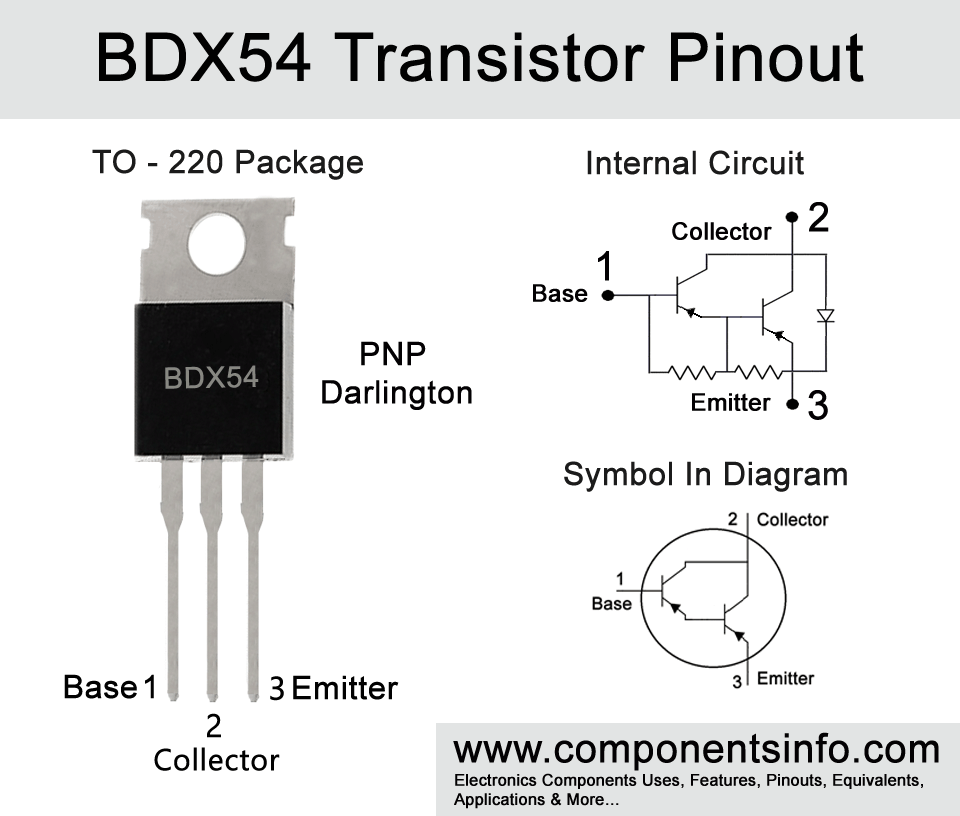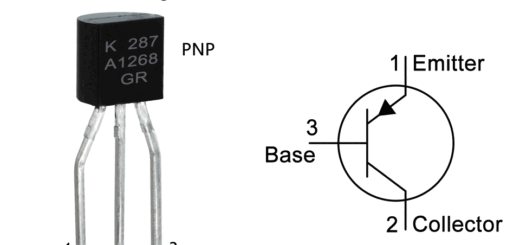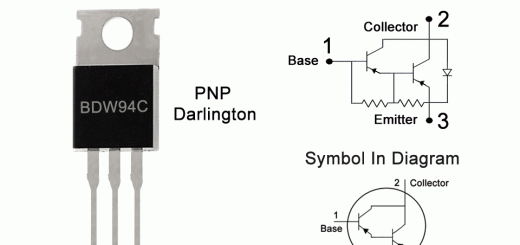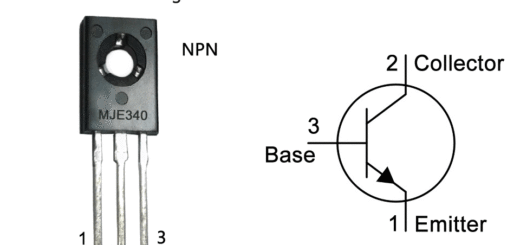BDX54 Transistor Pinout, Features, Equivalent, Applications and Other Info
BDX54 is a PNP Darlington transistor available in TO-220 package. Today we are going to explain BDX54 transistor pinout, features, equivalent, applications and other info about it.
Absolute Maximum Ratings:
- Package Type: TO-220
- Transistor Type: PNP Darlington
- Max Collector Current(IC): –8A
- Max Collector-Emitter Voltage (VCEO): –45V
- Max Collector-Base Voltage (VCBO): –45V
- Max Emitter-Base Voltage (VEBO): –5V
- Max Collector Power Dissipation (Pc): 60 Watt
- Minimum DC Current Gain (hFE): 750
- Max Storage & Operating temperature: -65 to +150 Centigrade
NPN Complementary:
NPN Complementary of BDX54 is BDX53
Replacement and Equivalent:
TIP137, MJF6668, TIP107, BDX34C/D, BDW74C/D, BDW47, BDX94C, BDT62B, 2SB886, TIP137, BD652, NTE264, BDX34E, NTE2344
BDW54 Transistor Explained / Description:
BDX54 is a transistor BDX54x NPN Darlington transistor series available in TO-220 transistor package. The transistor is designed to be used in switching, audio amplification, hammer drivers and variety of other general purpose applications. The pin configuration of the transistor are as follow: the first pin of the transistor is base, second pin is collector and the third pin is emitter.
The Absolute maximum ratings of the transistor are as follow: the collector-emitter voltage is -45V, collector current is -8A, collector-base voltage is -45V, emitter-base voltage is -5V, base curren tis -0.2A and collector dissipation is 60W.
Looking at some electrical characteristics of the transistor the DC current gain is 750, collector-emitter saturation voltage is -2V, and emitter cut-off current is -2mA.
As discussed above the BDX54 is a transistor of BDX54x series, there are also other transistors in this series such as BDX54A, BDX54B and BDX54C. The NPN complementary of these transistors are also available which are BDX53, BDX53A, BDX53B, and BDX53C.
Where We Can Use it & How to Use:
BDX54 is designed to be used for switching, audio amps, and hammer drivers but can also be used in a wide variety of other applications.
For using the transistor first check and confirm the pinout of the transistor. After that, if you want to use the transistor as a switch then connect its base with the signal source from which you want to control the load through a resistor (the value can be any between 1K to 10K), then connect the emitter with the positive supply of the circuit and connect the collector with the positive wire of the load and the negative wire of the load will be connected with the negative supply of the circuit. To use this transistor as a simple amplifier connect its base through a 102 ceramic capacitor with the signal source you want to amplify, connect its emitter with the positive supply and its collector with the positive wire of the speaker and the negative wire of the speaker will be connected with the negative supply of the circuit.
Applications:
Voltage Regulation
Pulse Generator
Switching Circuits
Motor Control
LED Drivers
Audio Amplifiers
Voltage inverters
DC to DC Converters
Battery Operated Applications
Safe Operating Guidelines:
Here are the operating guidelines of the transistor.
- Do not use the transistor to its absolute maximum ratings and always 20% below from its max ratings.
- So according to this rule the max collector current of the transistor is -8A but you should have to drive load under 6.4A.
- The Max collector-emitter voltage is -45V so we will not drive load of more than 36V.
- The max temperature limit of the transistor is -65°C to 150°C so it should not be exposed to temperatures below -65°C and above 150°C.
Datasheet:
To download the datasheet just copy and paste the below link in your browser.
https://datasheetspdf.com/pdf-down/B/D/X/BDX54_FairchildSemiconductor.pdf



